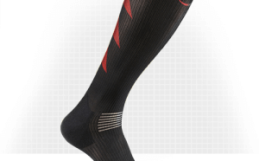If you have ever found yourself asking, “Should I be wearing compression socks?”, then this blog will help you decide.
What Do Compression Socks Do?
Compression socks are designed to apply pressure to the lower legs in order to increase venous blood return and reduce pain, swelling, and varicose veins.
There are several medical conditions defined below where compression socks are recommended for daily or occasional wear. Read on for a breakdown to see if you would benefit from wearing compression socks.
Do You Have Lymphedema?
People with lymphedema are most commonly advised to wear compression socks or arm sleeves. This is usually due to removal or damage to the lymph nodes, congestive heart issues, leaky vein syndrome, or swelling that is secondary to other diseases or from medications. While there is no cure for lymphedema, symptoms can be controlled with compression socks and swelling and pain can be reduced.
Are You At Risk of Deep Vein Thrombosis?
Deep vein thrombosis (DVT) is a condition where large blood clots form in one or more of the veins in the body. DVT can be exacerbated by air travel and it is highly recommended to wear compression socks and move every few hours to avoid complications.
Are You An Athlete?
Athletes can benefit from using compression socks to aid with recovery. There is new evidence that compression socks can help speed recovery and reduce delayed-onset muscle soreness (DOMS) by cutting down on lactic acid buildup in long-distance runners, or after a heavy workout.
Do You Work On Your Feet?
People who work in the service industry, nurses, and others that are required to stand for long periods of time are good candidates for compression socks. If your legs are tired after a long day of standing, we recommend that you get fitted for compression socks by a professional to decrease swelling and pain, and for the long-term prevention of varicose veins.
How To Get The Right Compression Socks
Getting fitted for custom compression socks is key. Poor-fitting compression socks can lead to either too much compression, which can decrease blood flow or too little which offers no — or very little — benefit.
There is a wide range of compression levels, which is measured in millimetres of mercury or mmHg. Socks with a compression rating of 15 to 20 mmHg are considered off the shelf and don’t require a prescription, but anything over that (20-30mmHg, 30-40mmHg or 40-50mmHg) will need to be prescribed by a physician. Book an appointment with a Certified Orthotist or Certified Pedorthist to ensure that you are getting the right product to relieve your symptoms.
At Applied Biomechanics, our caring and knowledgeable staff has over 85 years of combined clinical and technical experience to help you through this process. We also carry a wide selection of compression socks in-store — and they look just like regular socks! Trust us when we say that these aren’t your grandmother’s old compression socks.
If you have questions about compression socks or would like to speak to us about a custom fitting, contact us here.



